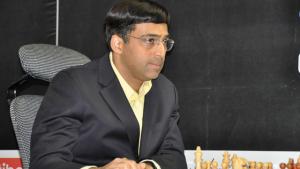
The Smith-Morra Gambit: A History
For this week's edition of my column on the histories of openings, I have chosen the Smith-Morra Gambit -- a selection that might excite many readers.
Most grandmasters have a low opinion of the Smith-Morra, while at the same time it is a favorite of many amateurs.
The Smith-Morra Gambit is named after two players: Pierre Morra and Kenneth Smith.
Not much is known about Pierre Morra (1900-1969).
He was from Nice, France, and I have read that he was an international master of correspondence chess. As with many of the more obscure figures of chess in relatively distant times, the only information that can be found is perhaps buried in old journals, available only to their original owners or stacked in a library somewhere in the world.
Morra published a booklet on the opening in the 1950s and analyzed it in some articles; because he was one of the first to do so, the opening is named after him.
However, I have not succeeded in finding any games actually played by him in the Morra Gambit.

image via Blogspot
Ken Smith (1930-1999) was well known as one of the gambit's biggest exponents. He wrote nine books about it. He also played it many times; however, as is the case with many players in smaller American tournaments, most of his games were not published (or only published in his own books).
Thus the only games I can find are the three losses against grandmasters from the 1972 San Antonio tournament. One game features a fairly instructive example of how to meet the Smith-Morra in a brave but practical way, combining an unwillingness to give up ground in return for "safety" while avoiding a truly dangerous attack:
But let us backtrack. The first example of the Smith-Morra Gambit in tournament play comes from Lionel Kieseritzky -- the loser to Adolf Anderssen in the famous "Immortal Game," but a romantic, attacking player in his own right.
Let us now see that Paris 1846 game, which should have given the gambit some instant popularity, but actually did not:
Although the Smith-Morra seems very amenable to the style of those early days, it did not reappear in tournament play -- as far as I can see -- until 1926. And in fact, it did not begin to be played with any kind of regularity until the early 1950s, when Morra was making his analysis.
One of the earliest aficionados was the Yugoslav player Milan Matulović. For example, here is a game that illustrates some of the basic themes of the Smith-Morra:
Another early exponent was Borislav Ivkov (incidentally, Matulović's "victim" in the famous incident that gave Matulović the nickname "J'adoubović").
Here, his strong opponent decides to decline the gambit in a way that is not highly regarded, since it allows White to reach an advantageous Maroczy Bind position:
In fact, many of the early exponents of the Morra Gambit were from Yugoslavia. I have noticed that the style of many players from there (and that includes today, in the successor states) is fairly aggressive, and involves a fondness for sacrificing material for attacks that cannot be precisely calculated -- hence the early popularity of the Smith-Morra.
However, in most of those early games the gambit was declined, as the players of the black pieces also wanted to be the attacker!
Which brings us to the first question facing Black: to accept or decline the gambit?

One of the "flaws" of the Smith-Morra Gambit is that, if Black so desires, he can meet 3.c3 with 3...Nf6, forcing a transposition to the Alapin (2.c3) Sicilian after 4.e5 Nd5. Thus the question arises: why not just play 2.c3?
Naturally, the Smith-Morra "move order" avoids various other ways of meeting 2.c3 (2...d5 or 2...d6, for instance), but the 2...Nf6 move is widely considered the critical response to the Alapin, and is chosen by most top players.
Thus Black has to choose between transposing to a perfectly reasonable opening or calling his opponent's bluff, playing in a principled way, and obtaining an extra pawn as early as move three.
While I don't think most strong players have any doubt about which approach is theoretically best, they might debate about which one is best in practice.
Check back next week to find out how a variety of strong players -- including Bobby Fischer -- handled the nascent Smith-Morra Gambit.
RELATED STUDY MATERIAL
- Read GM Smith's last article, The Chigorin Queen's Gambit: A History, Part 2.
- Watch IM Mark Ginsgurg's video series on the Smith-Morra.
- Take a lesson on the Smith-Morra in the Chess Mentor.
- Solve some puzzles in the Tactics Trainer.
- Looking for articles with deeper analysis? Try our magazine: The Master's Bulletin.

